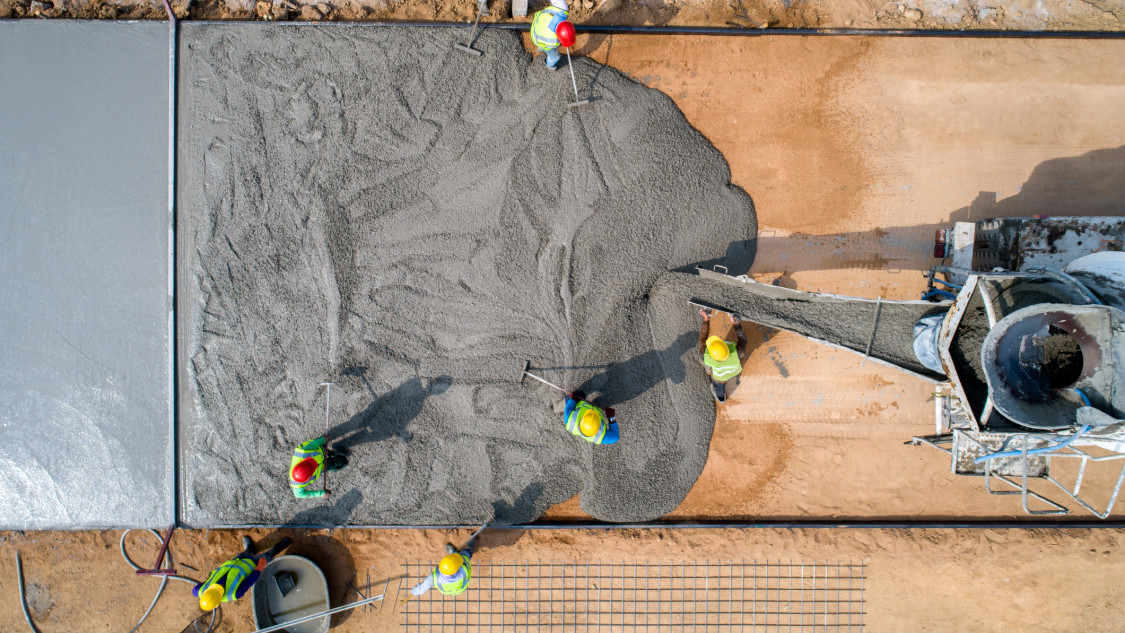
In 2023, the share of imported construction materials in the Ukrainian market rose to 23% (compared to 14% in 2021). Experts note that the domestic construction materials market requires systematic support from the government. Iryna Nastych summarised the current situation in the Ukrainian construction materials market in an article prepared by the Ukrainian Real Estate Club for Property Forum.
Cement
In 2022, nearly all the plants were operating at a loss. But even in this extremely difficult first year of the war, the plants did not cease working, did not make workers redundant, helped evacuate families, paid full salaries, paid taxes in full, and aided the Armed Forces and local communities.
In 2023, the situation improved somewhat, and the market adapted to working in a war zone. Demand for cement began to grow due to the partial recovery of the construction market and government programmes to protect the population and infrastructure. Exports also increased slightly, the Ukrcement Association reported.
Thus, in 2021, cement production in Ukraine amounted to 11.005 million tonnes, while consumption was 10.5 million tonnes. In 2022, production decreased by 51%, primarily due to falling demand, with consumption amounting to 4.3 million tonnes. In 2023, cement production amounted to 7.43 million tonnes, which is 37.5% more than in 2022, but we have not yet reached the 2021 levels; cement producers operated at only 60% of their real capacity. Cement consumption in 2023 amounted to 6.165 million tonnes. Experts from the Ukrcement Association expect that the reconstruction and recovery programmes that have already started in Ukraine will contribute to the stability of growth dynamics. It won't be an instantaneous return to maximum consumption. The market will take 4-5 years to warm up. Demand for construction materials will increase by 30% over the pre-war level.
Glass and façade manufacturing
Like other manufacturers, the glass and façade construction market, with the onset of the full-scale invasion, found itself in a difficult situation due to uncertainty and real daily threats that made it impossible to plan and effectively allocate production resources.
In 2022, the growth rate of the market fell by 40% compared to the previous year, 2021. 2023 was marked by some market growth - it was 20% higher than the previous year.
As a result of the 4 months that have passed since the beginning of 2024, market experts can state even higher rates of recovery and growth of the window market - an increase of 20% from the previous military year. The state of shock gradually gave way to the search for new ways and ideas aimed not only at ensuring the viability of the enterprise but also at supporting its further development and strengthening its position in the face of war.
According to preliminary estimates and analysis of data to date, we can already see a gradual recovery of the market to the level of 2021. The lag is in the range of 10-15%, which means that the stabilisation and recovery process is quite positive.
We can confidently talk about the growth of production volumes due to the recovery and increase in new construction in 2023 compared to 2022.
Thermal insulation materials and bituminous membranes
"After 24 February 2022, all our plants in Cherkasy and Kamianske were shut down until early summer. We managed to gather staff, preserve stocks, and resume production, but we ended the year with a drop from -45% in bitumen membranes to -57% in mineral insulation. The end of 2023 and the beginning of 2024 gave hope for a market recovery due to many reconstruction programmes. In March 2024, we approached the production and sales levels of 2021. We hope that 2024 will be the best year of full recovery in the bitumen membranes and polymer insulation businesses," says Oleksandr Manuilo, representative of manufacturer Sweetondale.
Even before the full-scale invasion, construction materials producers faced problems of raw material shortages, unfair competition, etc. The war expanded the list of challenges they had to overcome. And perhaps the most painful issue is the shortage of personnel, which is mentioned by everyone without exception.
The risk factors included also the supply of electricity to enterprises during blackouts, the risk of missile attacks on production and warehouse infrastructure, the blocking of borders for export, the instability of supplies of raw materials and components, and the mobilisation of certain categories of specialists at enterprises and those of main trading partners.
Ukrcement, the Association of Cement Producers of Ukraine, notes that they expect the government to implement the best European practices and simplify the terms of national legislation.



